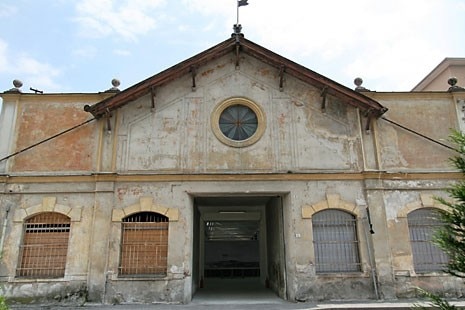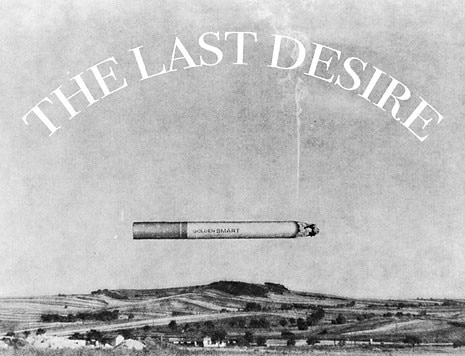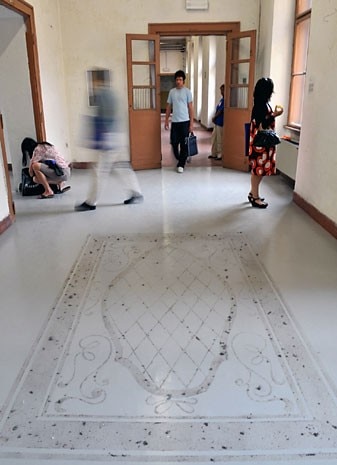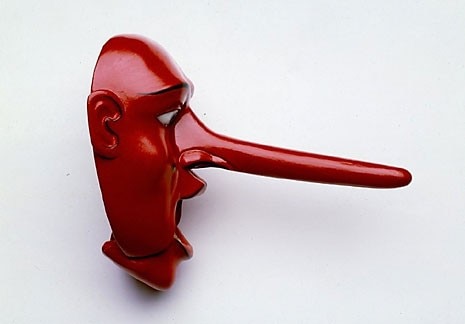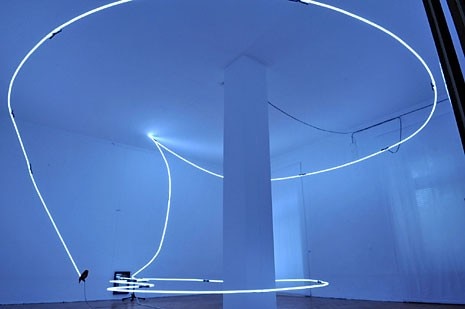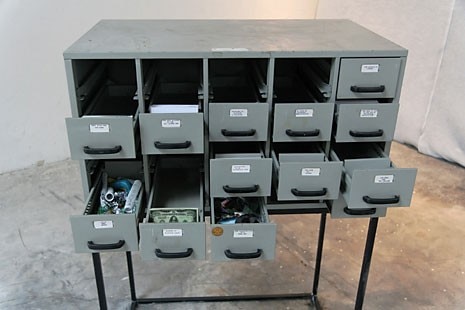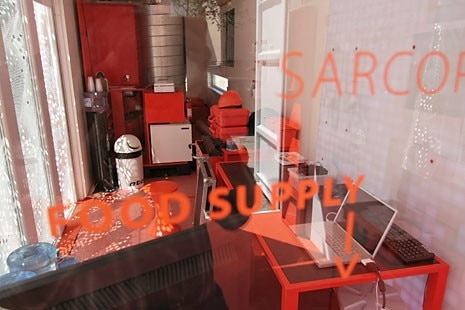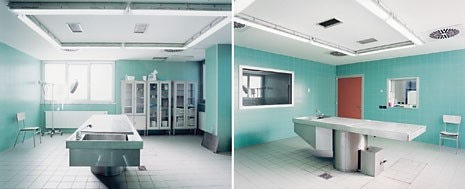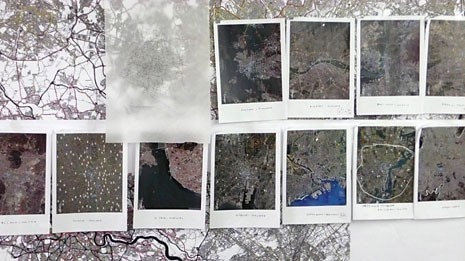At Rovereto the exhibition Principle Hope, curated by Adam Budak, addresses the theme of hope. The works are on show at the Manifattura Tabacchi, built in the 1800s, and in the ex-Peterlini cocoa factory that dates back to the 1900s, recently converted and declared a truly public space by the intervention by artist Daniel Knorr who has removed the doors to allow 24 hour access. Knorr is not the only artist to take a subversive approach to the notion of space, the overall project developed by Budak's team of curators is based on the idea of “critical regionalism” introduced by Kenneth Frampton who maintains that thinking in terms of regions becomes a form of resistance to the norm, to standards, to universal forms and practices. Riccardo Previdi addresses the revolutionary approach of 1968 with a series of posters in the city that show the giant flying cigarette of the Golden Smart photo-montage by Hans Hollein, consumed during the course of the event and with it the weight of the revolution. There are two poetic pieces are by Croatian artist Igor Eškinja, a simple and light carpet of dust made for the Manifattura Tabacchi and some seemingly flat murals drawn with sticky tape on the walls of the Ex-Peterlini that reveal imperceptible volumes. Balanced and organic, skilfully designed. So far, a real Biennale.
We then move up to Trento to the Palazzo delle Poste. Designed in 1929 by Angiolo Mazzoni, it is a rationalist building renovated for Manifesta 7 in collaboration with architectural practice Kuehn-Malvezzi. It houses the exhibition The Soul. Or, much trouble in the transportation of souls curated by Anselm Franke and Hila Peleg. One German, the other Israeli, both are young graduates from Goldsmiths College in London. Their exhibition idea proposes to examine Europe today not as an expanding geo-political entity but from the point of view of its psyche or soul. The fresco at the entrance to the old part of the Palazzo delle Poste serves as a reminder that it was in Trento in the sixteenth century that a council was established in response to the protestant reformation in which it was declared that not only real actions but also thoughts and imaginary desires should be subject to confession. In this way the soul was exposed to the external mechanisms of control and order. Emblematic on this subject are the ten lenticular photographs installed by Luigi Ontani at the window of the entrance that raise the question of the relationship between the soul and one's image of oneself. Following this is a large installation by Pietro Roccasalva, a neon environment created by the Milanese artist is connected to other elements of his making, sculptures, videos and digital images, that construct his enigmatic world, rich in historic references.
Moving through the Palazzo delle Poste one can also leave behind the videos, drawings and photographs on display, stopping off in the rooms of the miniature museums. An exhibition within an exhibition. Each room is a sketch of an imaginary museum with a European history, the exploration of a specific concept correlated to the story of the soul. For example, artists Maria Thereza Alves and Jimmie Durham and anthropologist Michael Taussig have joined forces to curate the Museum of European Normality. Another museum, conceived by architect Stefano Graziani is dedicated to Franco Basaglia (Museum for Franco Basaglia), the Italian psychiatrist who launched the campaign for the abolition of psychiatric institutions. The Museum of Projective Personality Testing is curated by Sina Najafi and Chistopher Turner, editors of the magazine Cabinet, and traces the origins and uses of various projective personality tests (like the Rorschach test). Director Florian Schneider has created the Museum of the Stealing of Souls, that examines the belief that the camera steals souls.
This exhibition has a solid conceptual basis that is perhaps difficult to perceive for visitors who are not from the art world. However, on reaching the northern-most location, the Habsburgian castle of Fortezza, in the village of the same name in the district of Bressanone, art is brought to us in its most immaterial form, via the word. Scenarios, a project that involved all the curators, takes shape in the minds of the visitors while walking through the fortress, listening. Essays by intellectuals and artists such as sociologist Saskia Sassen and the Indian writer Arundhati Roy read by actors emerge from loudspeakers and the invitation is to seek one's own language among the many heard.
Moving back down to the valleys and to Bolzano, the theme is residue, in other words what remains of our collective past. The exhibition The rest of now, curated by Indian group Raqs Media Collective, has been set up at the Ex-Alumix, a disused aluminium factory. The theme of the archive is strongly present in the index cards by Indian artist Lawrence Liang and computer systems for storing information by Zurich-based group Etoy Corporation. Permanence is in some way photographed by Walter Niedermayer in the cold shots of a mortuary while David Adjaye from the UK imagines what would remain in a Europe in which all the cities were condensed into a single block. Then, having travelled a hundred and thirty kilometres, it's time to go home. Giulia Guzzini
www.manifesta7.it
